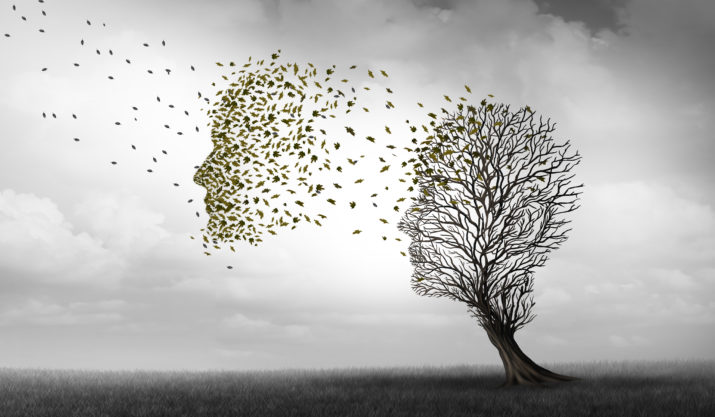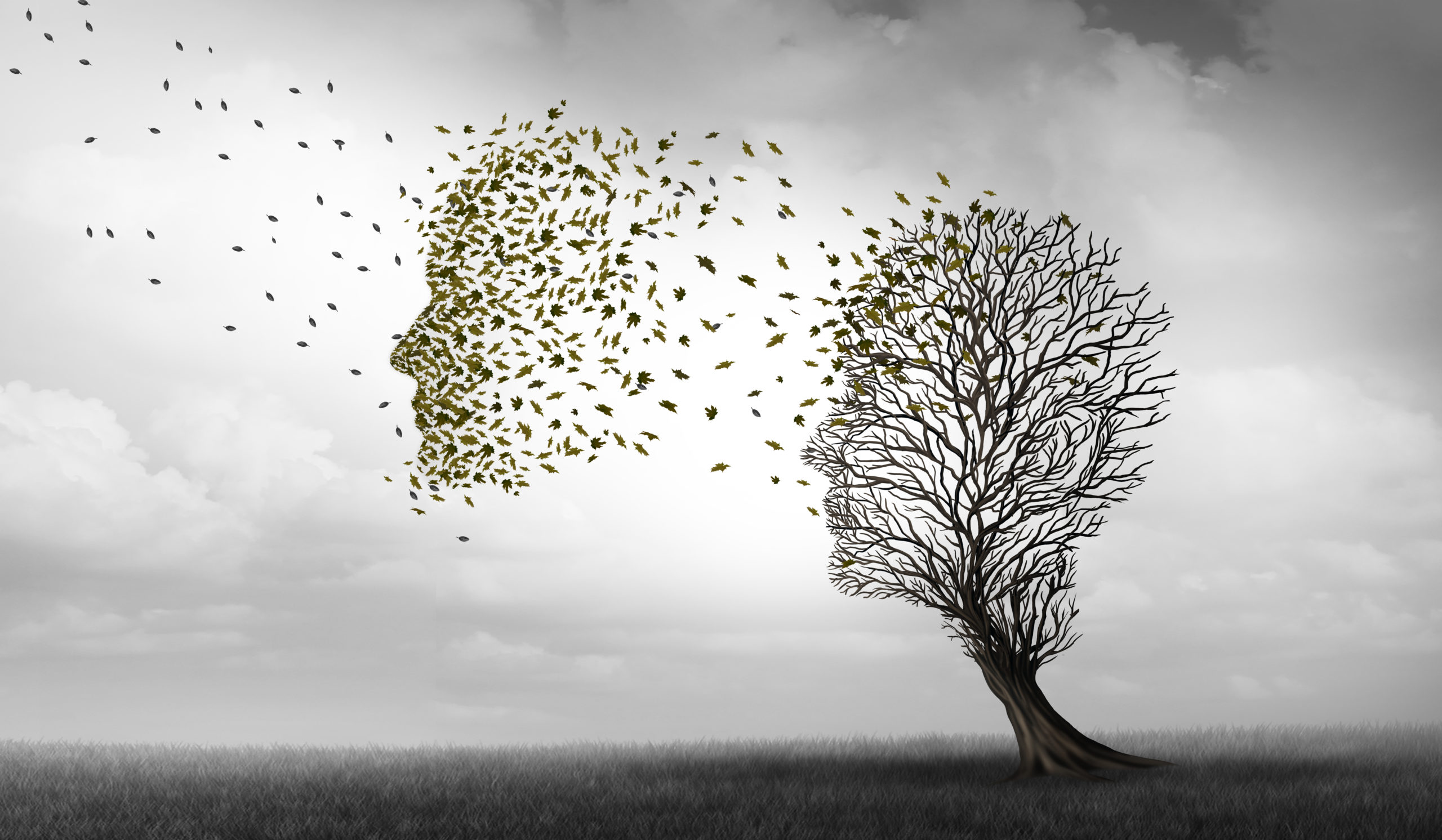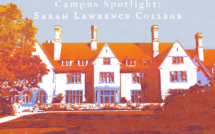
Remembering and Forgetting in Transit: The Interplay between Physical Spaces and Memory and Identity

This is part of our special feature, Displacement, Memory, and Design.
Every year, millions of people are confronted with violence, environmental disasters, and political oppression, making it unsafe or impossible to remain at home. Recent estimates indicated that there are over 80 million people worldwide who have experienced forced migration, approximately 30 million of whom have formally declared refugee status.[1] The migration journey(s), especially in the context of forced migration, is often associated with exposure to high levels of stress, adversity, and unstable conditions. Displacement from one’s home often has significant impacts on one’s sense of self identity and life story, and is accompanied by a rupture from many of those things—materials, spaces, relationships—that provide perspective, insights, and a sense of self-continuity. In addition to objects and spaces, self-identities are also constructed from cognitive processes, which give rise to internal representations and beliefs of where we come from, who we are today, and where we might be going in the future. These representations emerge in part from memories accumulated throughout one’s life. Memories, however, are not influenced solely by the mind. They are supported and shaped by cultural, contextual, and temporal factors. How, then, does one’s sense of who they are change when access to familiar and deeply personal contexts are no longer accessible? How much does one forget when separated from the places that activate certain memories? How are memories influenced and altered when one begins to bring elements of the past into new spaces and contexts throughout the course of migration(s)? While such questions have long been at the heart of some branches of scholarship (e.g. memoirs, art, history), the study of memory in relation to places is itself still very new. Further, how displacement from spaces impacts memory is understood even less. A better understanding of how memory and displacement interact will reveal not only important insights into the blurred lines between what takes place in our minds and beyond our bodies, but also a deeper appreciation of how displacement impacts our most intimate ways of understanding who we are.
Although the study of memory has been pursued by scholars cutting across almost every academic discipline, there is an especially long tradition of studying one’s personal past in the fields of psychology and allied branches of medicine and brain science. This is perhaps not surprising, given the extent to which memory, or various forms of memory, are biologically based and play a central role in such fundamental aspects of life, such as our identities, relationships, and time. When memory systems are working well, this all occurs seamlessly and we are not conscious of the subtle, yet crucial, contribution of memory on our own functioning. Of course, one’s deep reliance on memory in almost every situation becomes immediately apparent when one’s memory is negatively impacted, for example due to injury or insult.
Interestingly, the history of human memory research among those who study psychological processes, and more recently, neural processes, has focused on the de-contextualization of remembering from the world in which it inhabits (2019).[2]That is, while subjectively individuals recognize the great extent to which one’s environment plays a role in shaping how, what, and when people recall the past, efforts to align psychology with basic natural sciences contributed to decades of research in which investigations of memory were significantly devoid of worldly context. Experiment after experiment consisted of individuals, alone, recalling lists of words, strings of numbers, and arrangements of figures. This was especially pronounced in the decades of behaviorism in psychology during which figures like John Watson suggested that whatever is taking place within an individual’s mind should not be the concern of psychological research, as thought was merely a byproduct of observable action. In fact, in his treatise, “Psychology as the Behaviorist Views It,” Watson suggested that thinking would be better located within the measurable and observable vibrations of the larynx, rather than the brain.[3]
This is not to say that many significant advances were not made in the study of human memory through these efforts. These studies, especially those that caused the “post-cognitive revolution,” led to the careful characterization of memory domains and the development of tasks that enabled scholars and practitioners to study memory processes. These studies began to illuminate how certain mental processes can be connected to underlying neural functions and structures. Yet, it wasn’t until the study of autobiographical memory that the field explicitly recognized memory as being situated in one’s environment. Although the study of human memory in the “wild,” so to speak, was harder to carry out—it meant loosening up on some tightly controllable parameters—memory scholars persuasively argued that the field was in desperate need of research with greater ecological validity. Ulric Neisser, in fact, made this very point after memory scholars had very little to say in response to an ordinary person who asked them about the most routine aspects of memory.[4]
Among the branches of memory research that have emerged over the past few decades and embraced the idea of environmental context is the study of autobiographical memory. Autobiographical memories refer to a class of long-term memories, which are believed to be central to one’s personal life story. These are comprised of both semantic (e.g. general facts and knowledge) as well as episodic (e.g. visual details, emotions) details. Research into the study of autobiographical memory has illuminated a variety of ways in which the structure and functions of our personal pasts bear on how we come to understand ourselves and others, as well as our emotional wellbeing. For example, studies have found that difficulty recalling specific autobiographical memories is highly associated with mental health conditions, such as depression and posttraumatic stress disorder.[5] Additionally, there is a growing body of work that illustrates the functions of autobiographical memory—that is, individuals do not simply recall events, but they do so to aid in making decisions, building and nurturing relationships with others, and to maintain a sense of continuity over time.[6]
Understanding how autobiographical memories are impacted, shaped, and linked to wellbeing in the context of movement is less understood. Yet, movement seems to have an important effect on how people cognitively structure the past. Numerous studies have found that memories of movement, such as moving to a new house or town when they are a child, are often one of the earliest events which adults can recall. Moreover, the reminiscence bump, a phenomenon that has been replicated in numerous studies, indicates cross-culturally that people are more likely to recall more events from their late childhood and early adolescence, in part because this period involves frequent life transitions, such as moving.[7]This line of work has also revealed that migration contributes to additional reminiscence bumps outside of late childhood and early adulthood among people who move more than once in their life.
One reason why mobility, voluntary or forced, increases the salience of these autobiographical memories throughout our lives is because of its disruption on self-continuity. Even in the most benign of contexts, movement and mobility disrupts the patterns, habits, and rituals we perform every day. Over time, one’s sense of self becomes deeply intertwined with the enactment and engagement with the familiar. Patterns, when repeated again and again, facilitate a deep fluency and ease in which one navigates public and personal spaces. When a person moves to New York City they might remember their first taxi ride, but after a few years, riding in a taxi becomes a general category of information with many rides blurring into one another in the absence of surprise or novelty.
How is cognition then shaped by forced migration, especially among individuals who may have been displaced multiple times throughout their lives or may be living with a chronic sense of instability? Given the magnitude of the issue, there is surprisingly little research on the subject. The study of autobiographical memories among individuals with histories of forced migration is challenging. Nevertheless, a burgeoning body of work is beginning to demonstrate how autobiographical memories are shaped by dislocation and how individuals exposed to trauma throughout the migration process are likely to exhibit impoverished autobiographical memories associated with psychological distress. Work that we are currently undertaking in our lab is also underscoring the need to maintain strong social ties in the context of displacement. Individuals who know more about their family histories tend to show lower levels of distress and higher levels of reported self-esteem. Yet, preliminary observations are showing that the sharing of memories within families and across generations of immigrants is complex given concerns about how the sharing of negative experience may impact the identities of subsequent generations. Some recent findings from this work indicate that intergenerational stories within families are highly gendered, and stories from mothers may be especially important for buffering the negative impacts of stress and adversity across generations. For instance, we are seeing that stories from mothers tend to contain more emotion (including negative emotion) and focus more on relationships. Conversely, stories shared by fathers are more often about career and achievement. Although more work is needed, these data, along with other studies, underscore the potential importance of family narratives in maintaining a sense of self-continuity and wellbeing in the face of dislocation.
For the field of autobiographical memory to truly capture the impact of displacement on cognition, research must begin to encompass the spaces themselves; the spaces in which memories are formed and also lost. The aforementioned shift from “the lab” to “the wild” has been pushed again by scholars and students of cognition to consider how our materials, built environments, and technologies shape our thinking and memory. Rather than considering cognition as something that begins and ends with a neuron, the study of cognition has increasingly recognized the myriad of ways that thought is supported and shaped by everything from our smart phones to the placement of dishes in one’s pantry. Consider the example of someone who has lived in the same apartment for decades. She can easily recall where to find certain pots and linens. Then imagine that same person moves into a new home. For the first few months she may find herself inhibiting motor responses as she goes to reach for shelves that are in a different location. Maybe the ease in which she could multitask while preparing dinner suddenly becomes something that deserves all of her attention. Her ability to recall information may not have changed from one apartment to the next, but for anyone who has moved domiciles, the transition to a new space immediately reminds us that our cognitive functions are intimately connected to our built environments.
While to our knowledge the impact of forced migration on memory in relation to physical spaces has not been specifically investigated in psychological research, there is a growing body of evidence from the study of social memory indicating that when people are displaced, they risk losing powerful stories, personal memories, and access to parts of their identities because of this tightly interconnected relationship between cognition and physical materials. Similar to spaces, people rely on each other to recall memories of their own past. Studies with families, long-term couples, sports teams, and other well-defined groups have shown that under certain conditions, people are able to recall significantly more collectively than they can alone, a phenomenon referred to as transactive memory.[8] For example, one study asked older adults in long-term relationships to recall personal memories by themselves (the more traditional method of assessing memory abilities in psychology).[9] The researchers then asked then couples to recount shared personal stories together. In many cases, the collaborative recall boosted the overall cognitive performance of the couple. In contrast, studies have also documented a decline in wellbeing and cognitive functioning after the loss of a significant other. While some of this decline may be attributed to a wider decline in health or emotional wellbeing, it may also be that some of those memories are no longer accessible because they resided in the relationship between the couple.
We hypothesize that the same is true when it comes to displacement and forced migration. Like relationships, our celebrations, milestones, tragedies, and accomplishments are often linked to the places in which they occur. One walks by a café and recalls a deeply engaging conversation with a friend. We also use spaces like memories, in that we might visit certain places because we know it will remind us of certain times and instantly repair our mood—after a hard day, one might visit a particular restaurant because the year before it was the location of a joyous celebration. Not to mention one’s home and the memories that may be evoked by each room, photos and art adorning the walls, specific smells, sounds, such as music, creaks in a floor, and idiosyncratic doorknobs and drawers. Events, experiences, and emotions accumulate and become associated with our spaces. Over time, our spaces trigger our memories and remind us of those moments. What happens to our cognition when these spaces are no longer available? What happens to our autobiographical memories of those important events when those powerful cues are gone? How is our identity shaped when one is displaced from their built environments and the place itself becomes a cognitive representation? To date, we do not know. What we do know, however, is that we have witnessed, and will continue to witness, unprecedented human migration as result of political, social, and environmental crises. When we consider the many costs that take place, we must consider the potential loss of our autobiographical memories; autobiographical memories that are active and come alive when we interact with certain spaces.
What we also need to learn more about are the ways in which built environments become abstracted, integrated, and shared over time through memory practices. It is clear that moving looms large in the histories of individuals and these types of memories are disproportionally transmitted. A study done on intergenerational transmission of family stories found that individuals whose parents had emigrated from a country with violent political upheaval often recalled stories relating to immigration when asked to recount a few of the most important events in one of their parent’s lives. An ongoing study we are conducting at our Trauma and Global Mental Health Lab at the New School investigates how family background knowledge may impact wellbeing in young adults, and more specifically, how the psychological impact of this knowledge, the narrative theme, and the gender of the family member and participant may be interconnected. Preliminary findings from our study demonstrate that migration is central to life stories: more than 50 percent of participants mentioned moving homes at least once when asked to describe ten of the most important events in one of their parent’s lives. The sharing of migration stories may be less frequent and complicated when it occurred in the context of displacement. In recent work, people varied widely in their decision to share or not share memories of their lives before and during migration. Parents often struggled with what to say and how much, especially when such stories are interwoven with trauma and loss. Interestingly, we are finding that children are curious about these stories but at times struggle with how to ask about the unknowns of their parents’ pasts. Silences that lay between generations and families unsure of how to navigate these narrative cognitive divides. We have some preliminary data showing that such silences may negatively impact mental health across generations and finding ways to share these stories may help to mitigate stress and increase self-esteem. Future work, we hope, will guide how migration stories may be brought into the therapeutic context.
Although complex, discovering ways to share major life transitions, most evidently leaving home and adapting to new geographic contexts, are the kinds of events that may provide context for addressing current stressors and make up an individual’s most defining life stories, ones that they will remember and pass down to future generations. Where and how do these built environments persist in the stories, identities, new habits, patterns, and rituals of those who have been displaced? As individuals bring with them objects, or symbols of objects, associated with pre-migrations environments, how do they shape, and how are they themselves shaped, by new experiences, new memories, and an ever-changing sense of self? While we may not yet have the answers, we believe such research is crucial to knowing not only the magnitude of what is lost in forced displacement, but also to gaining a deeper understanding of how our most basic human processes and sense of self interact with our physical environments over time.
Adam D. Brown is an Associate Professor of Psychology and Vice Provost for Research at New School for Social Research where he directs the Trauma and Global Mental Health Lab. He is also an Adjunct Assistant Professor in the Department of Psychiatry at New York University School of Medicine.
Alexa L. Elias is a graduate student at King’s College London in collaboration with London School of Hygiene and Tropical Medicine in Global Mental Health and a graduate of Vassar College.
References
[1] Forced displacement passes 80 million by mid-2020 as COVID-19 tests refugee protection globally
https://www.unhcr.org/en-us/news/press/2020/12/5fcf94a04/forced-displacement-passes-80-million-mid-2020-covid-19-tests-refugee-protection.html
[2] Roediger, Henry & Yamashiro, Jeremy. (2019). History of Cognitive Psychological Memory Research. 10.1017/9781108290876.
[3] Watson, J. B. (1913). Psychology as the behaviorist views it. Psychological review, 20(2), 158.
[4] Neisser, U. (1978). Memory: What are the important questions? In: U. Neisser & I. E. Hyman (eds.) Memory Observed: Remembering in Natural Contexts. (pp. 3-18). New York: Worth Publishers.
[5] Lapidow, E. S., & Brown, A. D. (2015). Autobiographical memories and PTSD. Comprehensive Guide to Post-Traumatic Stress Disorders, 131-146.
[6] Harris, C. B., Rasmussen, A. S., & Berntsen, D. (2014). The functions of autobiographical memory: An integrative approach. Memory, 22(5), 559-581.
[7] Koppel, J., & Berntsen, D. (2015). The peaks of life: The differential temporal locations of the reminiscence bump across disparate cueing methods. Journal of Applied Research in Memory and Cognition, 4(1), 66-80.
[8] Hirst, W., & Manier, D. (2008). Towards a psychology of collective memory. Memory, 16(3), 183-200.
[9] Barnier, A. J., Priddis, A. C., Broekhuijse, J. M., Harris, C. B., Cox, R. E., Addis, D. R., … & Congleton, A. R. (2014). Reaping what they sow: Benefits of remembering together in intimate couples. Journal of Applied Research in Memory and Cognition, 3(4), 261-265.




